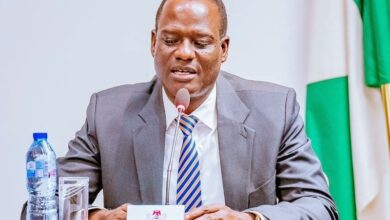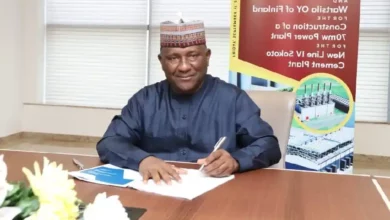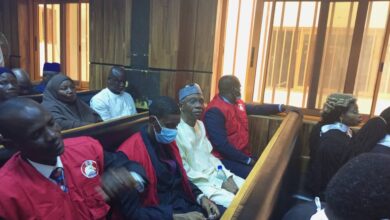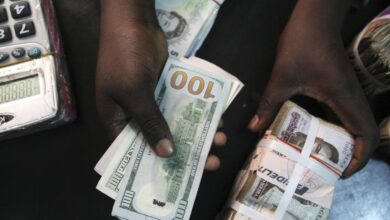Tinubu Administration Energy Vision 2030: Plan To Double Nigerian Crude Production To Raise $17.4 Billion

The Tinubu administration inheriting major budget deficits and a 39% Debt GDP ratio means FG will need to source funding from all areas possible to boost economic development.
Under this plan, they plan to raise the sum of $17.4 billion through NNPCL sell downs, through Selling down interests in JVs to a minority position and developing an operating model that eliminates cash calls and also Divest interests in the refineries and building NLNG operating model.
However, Nigerians must proceed with caution and call for transparency in the process, another key area which would be important in upgrading production is fighting insecurity and oil theft which was highlighted in the report by engaging key political and community stakeholders.
Article Summary
1. Ambitious Targets: Nigeria’s President Tinubu aims to reach 4 million barrels per day of oil and 12 billion cubic feet per day of gas production capacity by 2030.
2. Challenges: The energy sector faces lost investments, insecurity, fuel subsidy inefficiencies, governance concerns, and infrastructure limitations.
3. Reforms and Plan: The proposed plan includes reforms, divestments, policy changes, regulatory improvements, and the development of Greenfield projects to achieve the targets.
Nigeria’s newly inaugurated President, Bola Ahmed Tinubu‘s administration announced ambitious programmes and targets for Nigeria’s energy industry, citing a target of 4 million barrels per day production capacity by 2030 and also 12bcf/d Gas Production Capacity from 3.5bcf/d of Gas production capacity today.
They said this can be done by Mandating the NNPCL and NUPRC/NMDPRA to close out outstanding divestments, Strip NNPCL of policy-making roles and sell down NNPCL’s joint ventures to a minority position and develop an operating model that eliminates cash calls with targeted raise of $17.4 billion.
This was disclosed in the report by the Energy and Natural Resources subcommittees of the Bola Tinubu’s Advisory Council, proposing changes to enable growth in Nigeria’s Energy and Natural Resources Sectors.
ENERGY VISION 2030
According to the report, Nigeria is currently producing 3.5bcd/d of Gas production capacity and 1.4 Mbps of oil production capacity,2,500kta Petrochemicals Capacity.
The forecasted target for 2030 includes milestones of 12bcf/d Gas Production Capacity, 4mmbpd Oil Production Capacity and 7,500kta Petrochemicals Capacity.
PRESENT CHALLENGES
The report noted that to hit those targets, Nigeria’s oil and gas sector must address its current challenges, restore, grow, and sustain production to deliver economic growth
They listed Highlights of present economic and sector challenges, which are:
“$70 billion worth of investments lost in the petroleum industry since 2011 also due to the absence of the PIA.”
“ Insecurity is a major sector challenge. $46.16 billion was lost to crude oil theft between 2009 and 2020
“$10.70 billion lost annually to PMS subsidy and inefficiencies associated with the purchase, distribution, and sale of PMS.”
“Governance and regulatory concerns have eroded investor confidence, diverting private capital needed for the development of critical oil and gas infrastructure.
“Cumulatively, these have reduced the energy sector’s contribution to economic growth and deprived citizens of the necessary infrastructure and social amenities required for improving living standards.
NNPC REFORMS AND PLAN OUTLINE
The Committee recommends that Nigeria’s energy must restore, grow, and sustain production through three horizons, which would include Head-hunting competent, tested, reform-focused leaders in NNPCL ensuring its function as a commercial entity per PIA; paying taxes and profit to the Federation Account, also Strip NNPCL of policy-making roles, sell down assets and keep NCDMB within its Act mandate.
0-100 DAYS:
“Unify exchange rate window, Reorganize NUPRC/NMDPRA to deliver set milestone goals and headhunt/place capable resources in critical positions.
”Head-hunt competent, tested, reform-focused leaders in NNPCL ensuring its function as a commercial entity per PIA; paying taxes, royalties and profit to Federation Account and properly regulated by NUPRC/NMDPRA/NCDMB.
“Deregulate PMS pricing and implement Federal Direct Cash Transfer Program.
“Signal determination to end insecurity in oil-producing states (Imo, Delta, Ondo, Rivers, Bayelsa, Akwa-Ibom) by engaging key political and community stakeholders.
“Reform the operations of the military task force with clearly defined KPIs and consequent mgt to tackle deficiencies.
“Improve financing – agree on cash call arrears and debt repayment framework
“Transition to market prices for Gas.
18 MONTHS DEC 2024- TARGET: 1.8mbpd AND 3.5 bcf:
“Mandate NNPCL and NUPRC/NMDPRA to close out outstanding divestments and contract issues for project delivery clarity.
“Strip NNPCL of policy-making roles and keep NCDMB within its Act mandate.
“Consider integrating NUPRC, NMDPRA, and NCDMB into a single regulator or include all midstream activities into NUPRC scope.
“Expand domestic gas reserves and promote the development of a diversified oil and gas industry by implementing reforms in PIA including “network code.”
“Develop a sustainable financing model.”
“Facilitate a third-party gas pricing framework for the export market.
“Enact Fiscal Enablers for NAG and Deepwater via Finance Act and expand stabilization in PIA to cover full credit for post-FID levies and taxes.
“Bring ready Brownfield Project Onstream from 10 critical Gas projects and Oil projects at FID.
“Batch FIDs for growth projects for focus.
2027 TO 2030 – NNPC SELL DOWN
The Subcommittee recommends that it plans to achieve 2.5 MBPD by 2027. Followed by 5MBPD and 12bcfd by 2030, and execute over $17 billion worth of NNPCL sell-down, adding:
“Execute NNPCL sell down (target $17.4billion), Transition NNPCL to a minority shareholder and form global strategic partnerships with other covertures.
“Sell down interests in JVs to a minority position and develop an operating model that eliminates cash calls.
“Sell down/Divest interests in the refineries and build NLNG operating model.
“Bring remaining Brownfield Project on-stream from 10 critical gas projects and Oil and gas projects post-FDP and pre-FID
The report also urges Bringing Greenfield Projects to FID to grow production through Deep-water Oil and NAG Projects, Develop Offshore Gas Hubs and FLNG.












